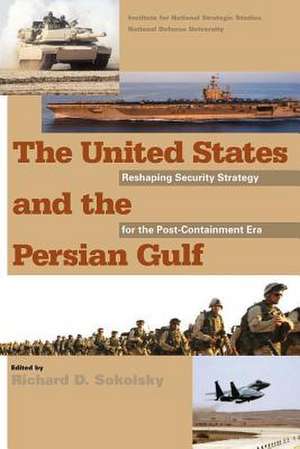The United States and the Persian Gulf
Autor National Defense University Editat de Richard D. Sokolskyen Limba Engleză Paperback
Preț: 108.69 lei
Nou
Puncte Express: 163
Preț estimativ în valută:
20.80€ • 21.49$ • 17.31£
20.80€ • 21.49$ • 17.31£
Carte disponibilă
Livrare economică 05-19 martie
Preluare comenzi: 021 569.72.76
Specificații
ISBN-13: 9781478192855
ISBN-10: 1478192852
Pagini: 174
Dimensiuni: 152 x 229 x 9 mm
Greutate: 0.24 kg
Editura: CREATESPACE
ISBN-10: 1478192852
Pagini: 174
Dimensiuni: 152 x 229 x 9 mm
Greutate: 0.24 kg
Editura: CREATESPACE
